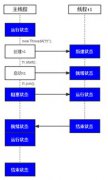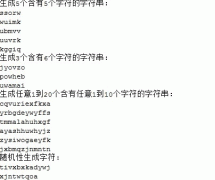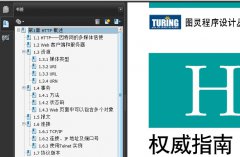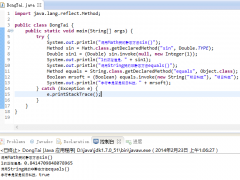String.getBytes()方法中的中文编码问题[组图]
String的getBytes()方法是得到一个字串的字节数组,这是众所周知的。但非凡要注重的是,本方法将返回该操作系统默认的编码格式的字节数组。假如你在使用这个方法时不考虑到这一点,你会发现在一个平台上运行.
良好的系统,放到另外一台机器后会产生意想不到的问题。比如下面的程序,class TestCharset { public static void main(String[] args) { new TestCharset().execute(); } private void execute() { String s = "Hello!你好!"; byte[] bytes = s.getBytes(); System.out.println("bytes lenght is:" + bytes.length); }}
在一个中文WindowsXP系统下,运行时,结果为:bytes lenght is:12
但是假如放到了一个英文的UNIX环境下运行:
$ Java TestCharset
bytes lenght is:9
假如你的程序依靠于该结果,将在后续操作中引起问题。为什么在一个系统中结果为12,而在另外一个却变成了9了呢?上面已经提到了,该方法是和平台(编码)相关的。在中文操作系统中,getBytes方法返回的是一个GBK或者GB2312的中文编码的字节数组,其中中文字符,各占两个字节。而在英文平台中,一般的默认编码是“ISO-8859-1”,每个字符都只取一个字节(而不管是否非拉丁字符)。
Java中的编码支持
Java是支持多国编码的,在Java中,字符都是以Unicode进行存储的,比如,“你”字的Unicode编码是“4f60”,我们可以通过下面的实验代码来验证:
class TestCharset { public static void main(String[] args) { char c = '你'; int i = c; System.out.println(c); System.out.println(i); }}
不管你在任何平台上执行,都会有相同的输出:
----------------- output ------------------
你
20320
20320就是Unicode “4f60”的整数值。其实,你可以反编译上面的类,可以发现在生成的.class文件中字符“你”(或者其它任何中文字串)本身就是以Unicode编码进行存储的:
char c = 'u4F60'; ... ...
进入讨论组讨论。
即使你知道了编码的编码格式,比如:
javac -encoding GBK TestCharset.java
编译后生成的.class文件中仍然是以Unicode格式存储中文字符或字符串的。
使用String.getBytes(String charset)方法
所以,为了避免这种问题,我建议大家都在编码中使用String.getBytes(String charset)方法。下面我们将从字串分别提取ISO-8859-1和GBK两种编码格式的字节数组,看看会有什么结果:
class TestCharset { public static void main(String[] args) { new TestCharset().execute(); } private void execute() { String s = "Hello!你好!"; byte[] bytesISO8859 =null; byte[] bytesGBK = null; try { bytesISO8859 = s.getBytes("iso-8859-1"); bytesGBK = s.getBytes("GBK"); } catch (java.io.UnsupportedEncodingException e) { e.printStackTrace(); } System.out.println("--------------
8859 bytes:"); System.out.println("bytes is: " + arrayToString(bytesISO8859)); System.out.println("hex format is:" + encodeHex(bytesISO8859)); System.out.println(); System.out.println("--------------
GBK bytes:"); System.out.println("bytes is: " + arrayToString(bytesGBK)); System.out.println("hex format is:" + encodeHex(bytesGBK)); } public static final String encodeHex (byte[] bytes) { StringBuffer buff = new StringBuffer(bytes.length * 2); String b; for (int i=0; i<bytes.length ; i++) { b = Integer.toHexString(bytes[i]); // byte是两个字节的,而上面的Integer.toHexString会把字节扩展为4个字节 buff.append(b.length() > 2 ? b.substring(6,8) : b); buff.append(" "); } return buff.toString(); } public static final String arrayToString (byte[] bytes) { StringBuffer buff = new StringBuffer(); for (int i=0; i<bytes.length ; i++) { buff.append(bytes[i] + " "); } return buff.toString(); }}





